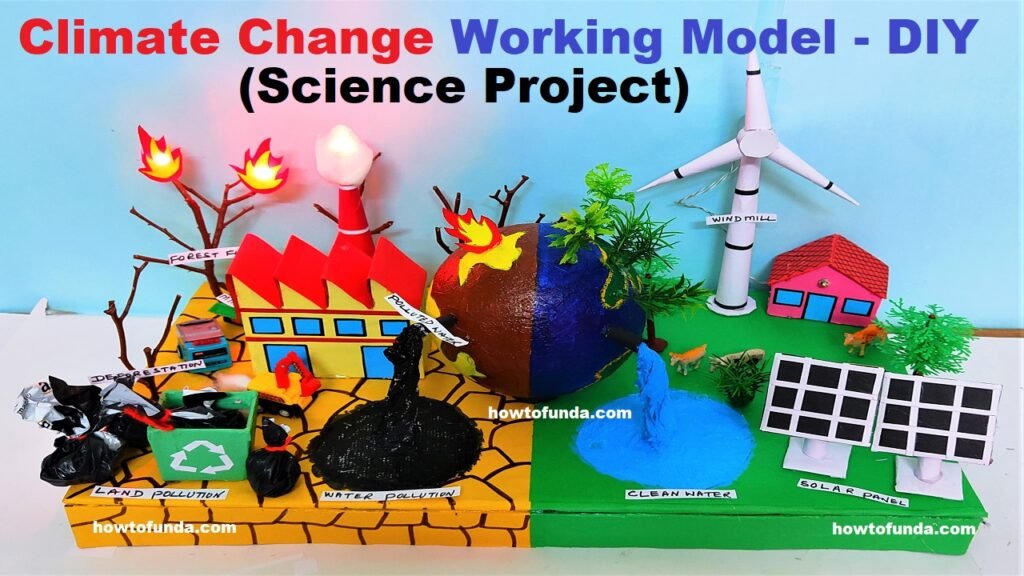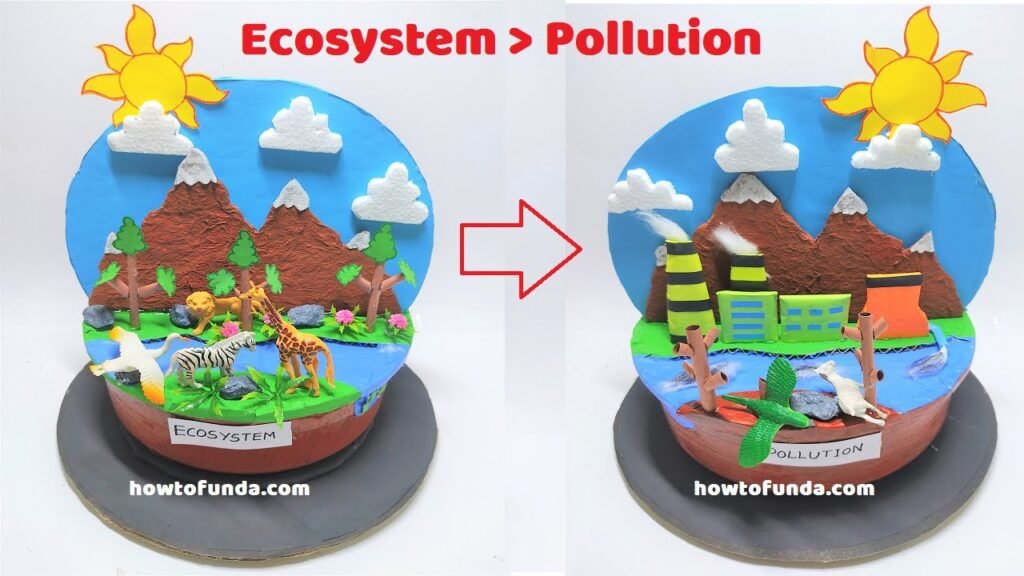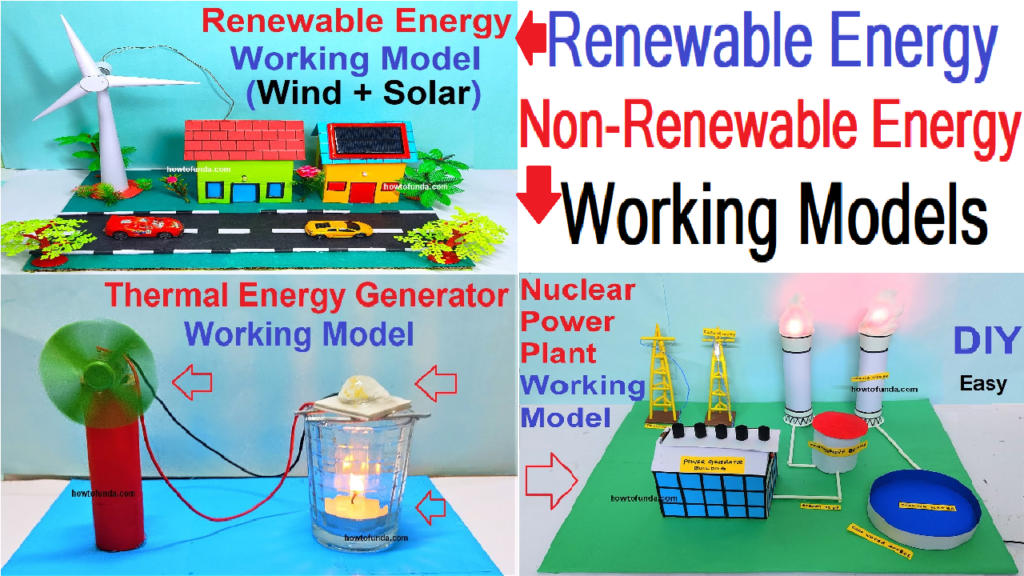Here are 30 environmental questions along with their answers to help students learn more about environmental issues and concepts:
General Environmental Awareness

- What is the greenhouse effect?
- The greenhouse effect is the process by which certain gases (greenhouse gases) trap heat from the sun in the Earth’s atmosphere, warming the planet.
- What are renewable energy sources?
- Renewable energy sources are natural resources that can be replenished over time, such as solar, wind, hydroelectric, geothermal, and biomass.
- Why is deforestation a problem?
- Deforestation leads to loss of biodiversity, disruption of water cycles, and contributes to climate change by reducing the number of trees that absorb carbon dioxide.
- What is biodiversity?
- Biodiversity refers to the variety of life on Earth, including the different species of plants, animals, and microorganisms, the genetic differences within these species, and the ecosystems they form.
- How does recycling help the environment?
- Recycling helps reduce the amount of waste sent to landfills, conserves natural resources, saves energy, and reduces pollution.
Climate Change

- What is climate change?
- Climate change refers to significant changes in global temperatures and weather patterns over time, primarily due to human activities such as burning fossil fuels and deforestation.
- What are the main greenhouse gases?
- The main greenhouse gases are carbon dioxide (CO2), methane (CH4), nitrous oxide (N2O), and fluorinated gases.
- What is global warming?
- Global warming is the long-term increase in Earth’s average surface temperature due to human activities, particularly the emission of greenhouse gases.
- How does climate change affect sea levels?
- Climate change causes sea levels to rise due to the melting of polar ice caps and glaciers, and the thermal expansion of seawater as it warms.
- What can individuals do to combat climate change?
- Individuals can reduce their carbon footprint by conserving energy, using public transport, recycling, eating a plant-based diet, and supporting renewable energy sources.
Pollution

- What is air pollution?
- Air pollution is the presence of harmful substances in the air, such as chemicals, particulate matter, and biological materials, which can harm human health and the environment.
- What are the sources of water pollution?
- Water pollution can come from industrial discharge, agricultural runoff, sewage, oil spills, and plastic waste.
- How does plastic pollution affect marine life?
- Plastic pollution harms marine life by causing ingestion, entanglement, and habitat destruction, and can introduce toxic substances into the food chain.
- What is noise pollution?
- Noise pollution is the excessive or harmful levels of noise in the environment, which can affect human health, wildlife, and the natural soundscape.
- How can we reduce air pollution?
- Reducing air pollution can be achieved by using cleaner energy sources, reducing vehicle emissions, planting trees, and regulating industrial emissions.
Conservation

- What is conservation?
- Conservation is the responsible management of natural resources to prevent exploitation, degradation, and destruction, ensuring their sustainability for future generations.
- Why are wetlands important?
- Wetlands are important because they provide habitat for wildlife, improve water quality, reduce flood risk, and support biodiversity.
- What are endangered species?
- Endangered species are animals and plants that are at risk of extinction due to factors like habitat loss, pollution, poaching, and climate change.
- What is sustainable development?
- Sustainable development is a way of meeting present needs without compromising the ability of future generations to meet their own needs, balancing economic, social, and environmental factors.
- How can we conserve water?
- Water conservation can be achieved by fixing leaks, using water-efficient appliances, taking shorter showers, and practicing mindful water use in daily activities.
Ecosystems and Habitats

- What is an ecosystem?
- An ecosystem is a community of living organisms and their physical environment, interacting as a system through nutrient cycles and energy flows.
- What is habitat destruction?
- Habitat destruction is the process by which natural habitats are rendered unable to support the species present, often due to human activities like deforestation, urbanization, and agriculture.
- What is the role of pollinators in the ecosystem?
- Pollinators, such as bees, butterflies, and birds, are crucial for the reproduction of many plants, including crops, by transferring pollen from one flower to another.
- What is desertification?
- Desertification is the process by which fertile land becomes desert due to drought, deforestation, or inappropriate agriculture, leading to a loss of productivity.
- How do invasive species affect ecosystems?
- Invasive species can disrupt ecosystems by outcompeting native species for resources, spreading diseases, and altering habitats, often leading to a loss of biodiversity.
Renewable Energy

- What is solar energy?
- Solar energy is the power harnessed from the sun’s rays, which can be converted into electricity or heat using solar panels and other technologies.
- What is wind energy?
- Wind energy is the process of generating electricity using the wind, typically through wind turbines that convert kinetic energy into electrical energy.
- How does hydropower work?
- Hydropower generates electricity by using the energy of flowing water to turn turbines, which then drive generators.
- What are the benefits of renewable energy?
- Benefits of renewable energy include reducing greenhouse gas emissions, decreasing air pollution, providing sustainable energy, and reducing dependence on fossil fuels.
- What is geothermal energy?
- Geothermal energy is the heat derived from the Earth’s internal heat sources, which can be used for heating and electricity generation.
These questions and answers can help students gain a deeper understanding of various environmental issues and the importance of sustainability.

